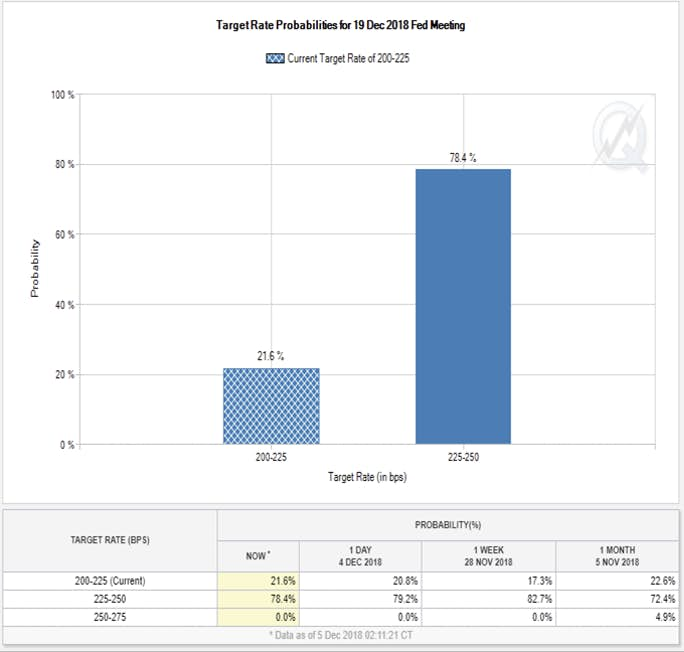
The Fed's Beige Book says the overall economy expanded at a modest or moderate pace. Labor markets tightened.
Beige Book Background
The "Beige Book" is a compilation of economic activity by each of twelve Federal Reserve districts.
It's produced roughly two weeks before the FOMC meets to discuss interest rate policy. The next rate-setting meeting is December 19.
The book is largely a compilation of all the most recent Fed regional reports (Empire State, Philly Fed, Dallas Fed, etc.)
The regional reports, which come out monthly, consist largely of anecdotal diffusion indexes that seldom match hard data industrial production numbers.
In short, there is little in the Beige Book that's of practical value. Here is the overall synopsis from the actual report.
Overall Economic Activity
Most of the twelve Federal Reserve Districts reported that their economies expanded at a modest or moderate pace from mid-October through late November, though both Dallas and Philadelphia noted slower growth compared with the prior Beige Book period. St. Louis and Kansas City noted just slight growth. On balance, consumer spending held steady – District reports on growth of nonauto retail sales appeared somewhat weaker while auto sales tended to improve, particularly for used cars. Tourism reports varied but generally kept pace with the economy. Tariffs remained a concern for manufacturers, but a majority of Districts continued to report moderate growth in the sector. All Districts reported growth in nonfinancial services – ranging from slight to strong. New home construction and existing home sales tended to decline or hold steady, while construction and leasing of nonresidential structures tended to rise or remain flat. Overall, lending volumes grew modestly, although a few Districts noted some slowing. Agricultural conditions and farm incomes were mixed; some Districts noted impacts from excessive rainfall and from tariffs, which have constrained demand. Most energy sectors saw little change or modest growth. Most Districts reported that firms remained positive; however, optimism has waned in some as contacts cited increased uncertainty from impacts of tariffs, rising interest rates, and labor market constraints.
Employment and Wages
Labor markets tightened further across a broad range of occupations. Over half of the Districts cited firms for which employment, production, and sometimes capacity expansion had been constrained by an inability to attract and retain qualified workers. In fact, several Chicago firms reported that some employees have simply quit – with no notice nor means of contact. Partly as a consequence of labor shortages, most Districts reported that employment growth leaned to the slower side of a modest to moderate pace. Conversely, most Districts reported that wage growth tended to the higher side of a modest to moderate pace. In addition to raising wages, most Districts noted examples of firms enhancing nonwage benefits, including health benefits, profit-sharing, bonuses, and paid vacation days.
Prices
On balance, prices rose at a modest pace in most Districts, although a few noted moderate increases. Nearly all reported that input costs rose faster than final goods prices. Reports of tariff-induced cost increases have spread more broadly from manufacturers and contractors to retailers and restaurants. Local growing conditions caused prices to vary across farm products and among Districts, but reported soybean prices were typically lower. Several Districts noted falling oil and fuel prices, as well as rising freight costs. House prices continued to rise in a majority of markets.
32 Pages
Each of the 12 districts had there own version of the story with a take on 10 different components:
- Overall Synopsis
- Employment and Wages
- Prices
- Manufacturing
- Retail Sales
- Nonfinancial Services
- Construction and Real Estate
- Energy
- Agriculture
- Financial Services
Compilation of Anecdotes
Once again, there is never anything new in the book.
It's simply a compilation of all the recent regional reports with perhaps a few Fed president opinions thrown in.
The report is backward, not forward looking.
Rate Hike Probability
Input Doesn't Matter
The market expects the Fed to hike. So the Fed will hike. The Beige Book input does not matter.
This material is based upon information that Sitka Pacific Capital Management considers reliable and endeavors to keep current, Sitka Pacific Capital Management does not assure that this material is accurate, current or complete, and it should not be relied upon as such.
Recommended Content
Editors’ Picks
GBP/USD stays below 1.2450 after UK employment data

GBP/USD trades marginally lower on the day below 1.2450 in the early European session on Tuesday. The data from the UK showed that the ILO Unemployment Rate in February rose to 4.2% from 4%, weighing on Pound Sterling.
EUR/USD steadies above 1.0600, awaits German ZEW and Powell speech

EUR/USD is holding above 1.0600 in the European morning on Tuesday, having hit fresh five-month lows. The pair draws support from sluggish US Treasury bond yields but the rebound appears capped amid a stronger US Dollar and risk-aversion. Germany's ZEW survey and Powell awaited.
Gold price holds steady below $2,400 mark, bullish potential seems intact

Gold price oscillates in a narrow band on Tuesday and remains close to the all-time peak. The worsening Middle East crisis weighs on investors’ sentiment and benefits the metal. Reduced Fed rate cut bets lift the USD to a fresh YTD top and cap gains for the XAU/USD.
SOL primed for a breakout as it completes a rounding bottom pattern

Solana price has conformed to the broader market crash, following in the steps of Bitcoin price that remains in the red below the $65,000 threshold. For SOL, however, the sensational altcoin could have a big move in store.
Key economic and earnings releases to watch

The market’s focus may be on geopolitical issues at the start of this week, but there is a large amount of economic data and more earnings releases to digest in the coming days.
